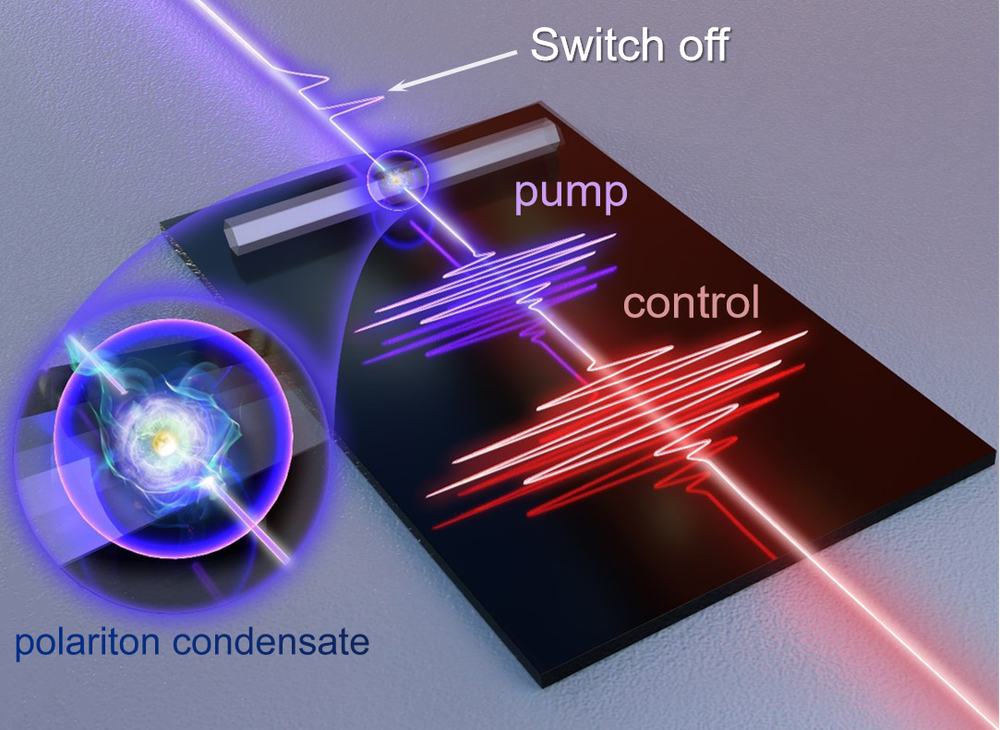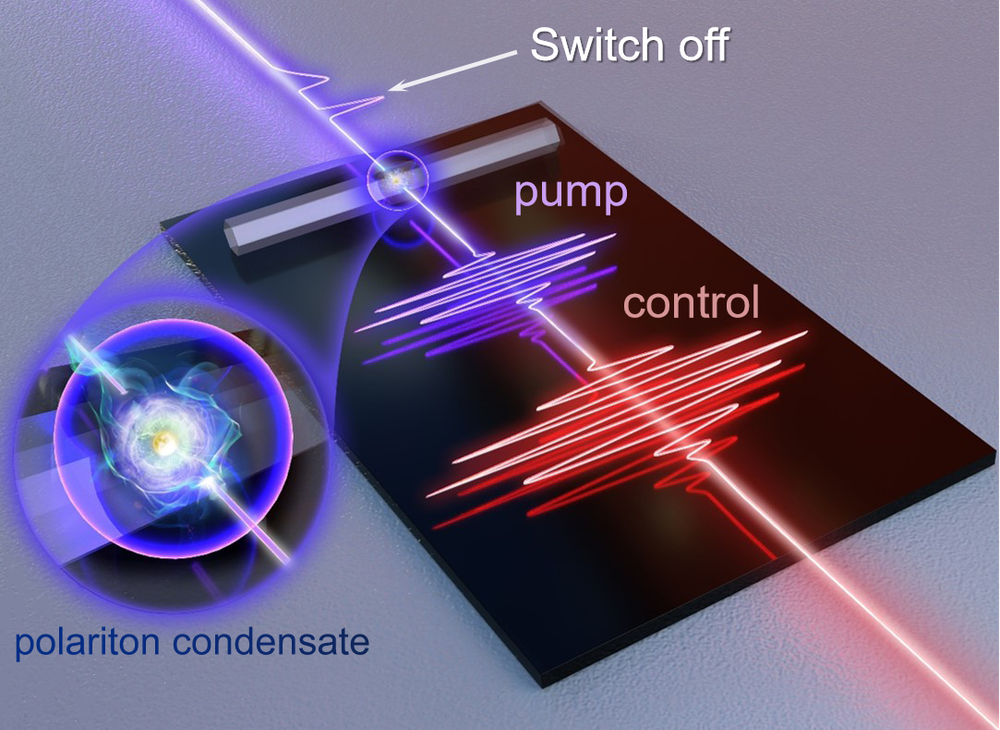Ultrafast Switch from a Bose-Einstein Condensate
Light-based information-processing chips could provide a huge improvement in processing power and speed over today’s electronics, but one of the challenges to their development is creating optically-controlled switches that are fast. A new trick for allowing one light signal to control another in a semiconducting material now pushes switching times from around a picosecond (10−12 seconds) to as much as 100 times faster in a device that can be readily integrated onto a chip [1]. The rapid switching is achieved by exploiting a Bose-Einstein condensate (BEC)—a quantum state famous for exotic behavior in superconductors and cold gases—in a new way. The work paves the way to extremely high-frequency optical information technologies.
Optoelectronic switching—using light to control a current—has previously been demonstrated within just 1 femtosecond (10−12 seconds) but only in a semiconductor device that is difficult to fabricate and to operate [2]. A different approach to making chip-based optical devices exploits electronic excitations called exciton polaritons, formed when a photon trapped in an optical cavity interacts with an electronic state called an exciton (a combination of an electron and a “hole,” or absence of an electron). The photon and exciton can bind into a quasiparticle, the exciton polariton.
Exciton polaritons can interact with light in ways that change abruptly as the intensity of the light is changed. In particular, an optical pulse can cause the light emitted by these quasiparticles to decline abruptly to zero intensity. Polariton-based optical switches have been reported previously with switching times of a picosecond or so [3, 4].
A team in China led by Hui Li of East China Normal University wanted to speed up switching by using a BEC of polaritons, where the quasiparticles “condense” into a single quantum state. Bose-Einstein condensation generally happens only at ultralow temperatures, but exciton polaritons in semiconductor microcavities can form a BEC even at room temperature [5]. Such polariton condensates have been used before in optical switches and other devices [3, 6], but Li and colleagues suspected that they could achieve much faster switching with a new technique. They wanted to exploit the way a “control” pulse of light can interact with the photon part of the quasiparticles to rapidly clear many of the polaritons out of the BEC state and abruptly switch the system off.
The team’s polariton BEC is formed in a microcavity—a zinc oxide wire, 3.6 micrometers in cross-section—from exciton polaritons created by an ultraviolet pump pulse that lasts only a few femtoseconds. The pump photons bounce around within the wire’s hexagonal cross-section and interact with excitons in the material to form polaritons. The polaritons condense into a BEC of around 20 million quasiparticles that decays within a few picoseconds. The pump pulse serves as the input signal; while the BEC lasts, some of its photons are emitted and can be detected as the output.
The control pulse from a red laser disrupts the condensate, depleting it of polaritons and switching off the output signal. Li says that this disruption happens in less than a picosecond—about 100 times faster than earlier polariton switches. What is more, the ratio of on-to-off signal (extinction ratio) in the device is about a million—the best achieved in a polariton switch. The researchers say that the switching speed might be sped up by 10 times by shortening the duration of the control pulse.
“This is very nice work, and I’m impressed by their results,” says quantum optics expert Daniel Suárez Forero of the University of Maryland in College Park. “It is nice to see how, 27 years after the first experimental demonstration of a BEC, the control of systems hosting this phenomenon has improved to the point that technological applications can be implemented.”
He praises the room-temperature operation, fast switching times, and high extinction ratio of the device. Such properties “make these systems very suitable for ultrafast switching technologies,” he says. But Suárez Forero cautions that there are still important challenges to overcome—for example, miniaturizing all the components of the setup, including the lasers.
–Philip Ball
Philip Ball is a freelance science writer in London. His latest book is How Life Works (Picador, 2024).
References
- F. Chen et al., “Optically controlled femtosecond polariton switch at room temperature,” Phys. Rev. Lett. 129, 057402 (2022).
- A. Schiffrin et al., “Optical-field-induced current in dielectrics,” Nature 493, 70 (2012).
- C. Antón et al., “Dynamics of a polariton condensate transistor switch,” Appl. Phys. Lett. 101, 261116 (2012).
- J. Feng et al., “All-optical switching based on interacting exciton polaritons in self-assembled perovskite microwires,” Sci. Adv. 7 (2021).
- S. Christopoulos et al., “Room-temperature polariton lasing in semiconductor microcavities,” Phys. Rev. Lett. 98, 126405 (2007).
- T. Byrnes et al., “Exciton–polariton condensates,” Nat. Phys. 10, 803 (2014).





